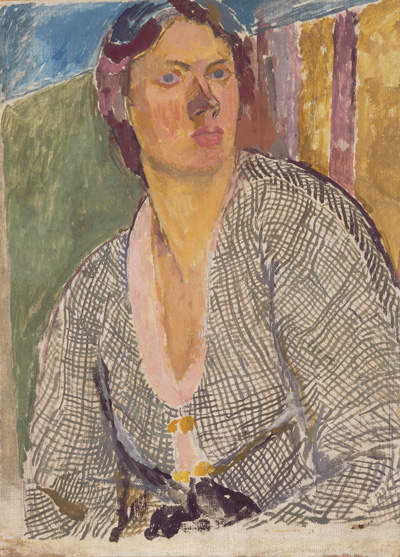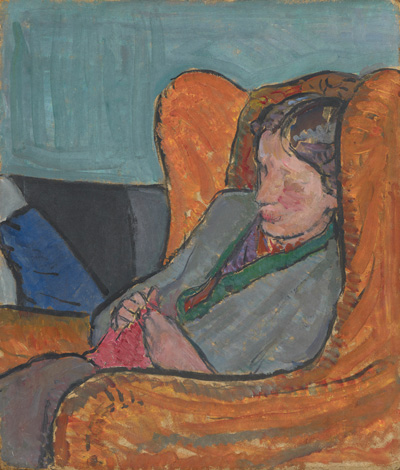Vanessa Bell exhibition at the Dulwich Picture Gallery rings true

At first glance you might wonder what the Bloomsbury artist Vanessa Bell and musician, writer and artist Patti Smith have in common, but an intimate exhibition alongside the first ever major retrospective of Bell’s work at the Dulwich Picture Gallery, helpfully shines a spotlight on the radical and uncompromising nature of Bell’s life and work.
Patti Smith and Vanessa Bell?
Smith’s fascination with the well-documented bohemian and erudite lifestyle of the Bloomsbury Group led her to take a series of photographs of Bell’s home, Charleston, including images of her library, her bed and Duncan Grant’s (Bell’s life companion) brushes. These almost painterly depictions partner well alongside Bell’s own photographs of her children and the coterie of artists and writers which orbited her.
This modest, but beautifully presented collection alerts us to the potency of objects and places when they are saturated with the touch or presence of those we admire and intrigue us. Objects, people and places form the basis of Vanessa Bell’s work and her paintings and designs reflect the bold, unconventional approach she took in crafting her life.
The first major Vanessa Bell retrospective
The main exhibition focuses on the most productive and accomplished period of Bell’s artistic career and demonstrates not only her originality and mastery as a painter, but rightly recognises her intellectual brilliance and willingness to acknowledge the new developments in art during the early part of the 20th century. She trained under John Singer-Sergeant, but served a debt to Matisse, visited Picasso, embraced Roger Fry’s seminal post-impressionist show of 1910 and understood the colour theory of people like Kandinsky, most evident in her abstractions and her eagerness to explore the emotional force of colour.
This beautifully presented exhibition eschews the chronological paradigm in favour of grouping paintings by genre and it works very successfully. It’s front loaded with the insightful and skilful portraits. The veneer of civility and acceptance which shrouded Bell’s husband Clive’s affair with recognised beauty Mary Hutchinson, cracks slightly with this depiction of her with a pursed mouth, pallid complexion and lurid green apparel. For all the assumptions of free spirited sexuality and newly defined mores, this portrait is not a flattering one!
As the exhibition moves through still lives and landscapes, each piece reinforces this carefully curated narrative of painting being central to Bell’s life and positions her, not only as an artist who should have received greater recognition, but as a feminist pioneer who sought, and achieved, an artistic and personal freedom.

How art reflects life
We often, quite carelessly I think, make the assumption that women artists are excluded from the pantheon because of self-deprecation, but in Bell’s case this may be true. A portrait of Molly MacCarthy was bought by Duncan Grant after he retrieved it from its function as the roof of the rabbit hutch.
It illustrates beautifully how Vanessa Bell’s art reflects her life. During this most prolific period, she gave birth to three children, challenging the assumption that motherhood automatically compromises artistic productivity. The still-lives shown here depict the ceramics she collected and are a vehicle for her explorations in colour, form and abstraction and reflect her joy in the pleasure of daily life.
While much of this work is a century old, its lack of self-consciousness and libertarian spirit shames much more contemporary work. This is work which is suffused with candour whether it’s her portraits of women which shift the objectifying gaze or the feeling of isolation and tension which characterise Studland Beach.
This is a joyous and fascinating exhibition and I urge you to visit. The Dulwich Picture Gallery has carved an important niche in bringing to light and championing neglected artists, many women, and challenging our preconceptions of their work. This exhibition is no exception and an absolute delight.
Both exhibitions run from 8 February – 4 June 2017.

Comments